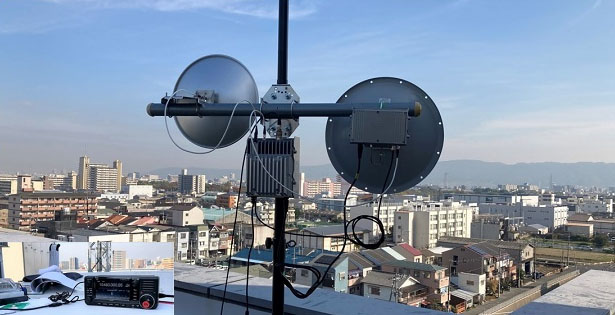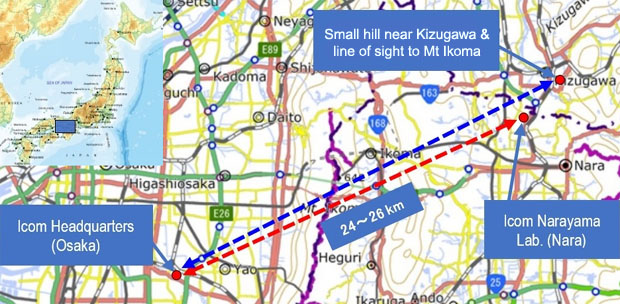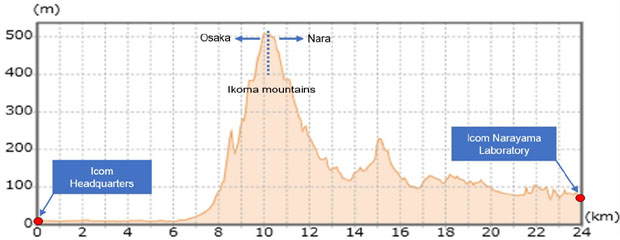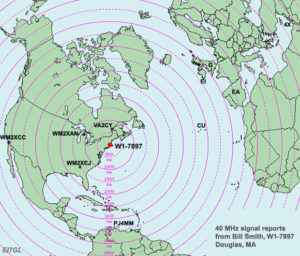Communication experiments in Japan at 5600 MHz and 10 GHz using the ICOM IC-905

On the 17th of November 2022, ICOM staff in Japan conducted some experiments over a 25km obstructed path on the 5.6 GHz and 10 GHz microwave bands with the company’s new IC-905 transceiver.
The photo above shows the view from the roof top of the six story building at ICOM’s headquarters in Osaka. The two parabolic dishes for 5.6 GHz and 10 GHz are beaming towards the Ikoma mountains. The RF module of the IC-905 and the 2.4 GHz to 10 GHz transverter are also shown. The station at ICOM HQ was JK3AZL.
The second portable station JL3ZAB with a similar setup was operating from a hill near Kizugawa City which was about 25kms away on the other side of the Ikoma mountains. The map below below shows the path in Blue. The important point here is that both stations were blocked from each other by the mountains but both were line of sight to Mt Ikoma.
Both stations started early in the morning, setting up their radio equipment and antenna systems. By 9am, both stations were able to easily catch each other’s signals by pointing their parabolic antennas at the summit of Mt Ikoma using a map and compass and were able to communicate by voice on both the 5.6 GHz and 10 GHz bands.
It is believed that the propagation mode was knife-edge diffraction from the mountain peaks.
The power of the IC-905 is 2-watts at 5.6 GHz while the output power of the 10 GHz transverter is 1-watt.
The test was repeated later with JL3ZAB now operating from the ICOM Narayama Laboratory. From this lower location, the summit of Mt. Ikoma was now longer visible. They were barely able to communicate on 5.6 GHz with CW while communication at 10 GHz was not successful.
The path from ICOM HQ to their Narayama Lab is shown above in Red. The path profile is shown below albeit with an exaggerated vertical scale.
The ICOM team concluded… “It is known that in the SHF band or even higher frequencies, radio propagation gradually becomes more linear, similar to light. The Icom team thought it would be interesting to see whether communication will be impossible under non-line-of-sight conditions as in this case, or whether communication by mountain diffraction (Knife-edge effect), known as anomalous propagation, would be possible.
The experiment revealed that mountain diffraction phenomena occur even on mountains with relatively gentle peaks such as the Ikoma Mountains. Conversely, if the peaks are not visible, communication is difficult.”
Analysis… Once the ICOM IC-905 goes on sale, people that purchase it may well expect only line of sight contacts as that will be the mantra of most websites and commentators. With high gain antennas and weak signal modes, there will be many unusual paths like the example above.
In an urban environment, there may well be many reflections off objects like high buildings, water towers, masts, etc.
If you consider that tropospheric ducting often occurs more often at microwave frequencies then there are bound to be surprises for those who are interested in experimenting on these amateur bands above 1 GHz.
News source… https://www.fbnews.jp/202212/w_news03/
If you have found a spelling error, please, notify us by selecting that text and pressing Ctrl+Enter.










